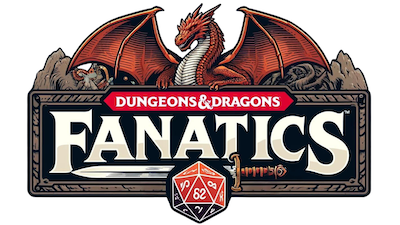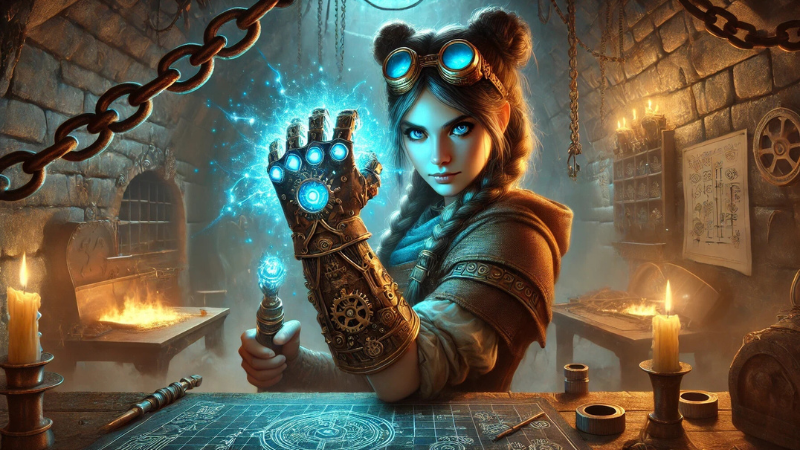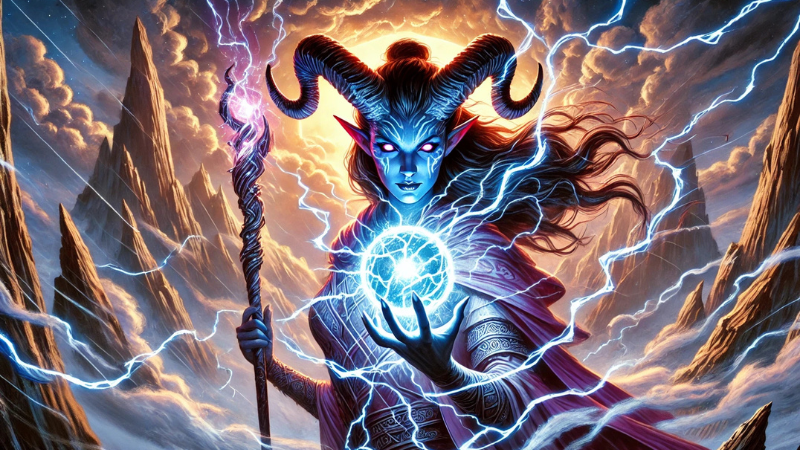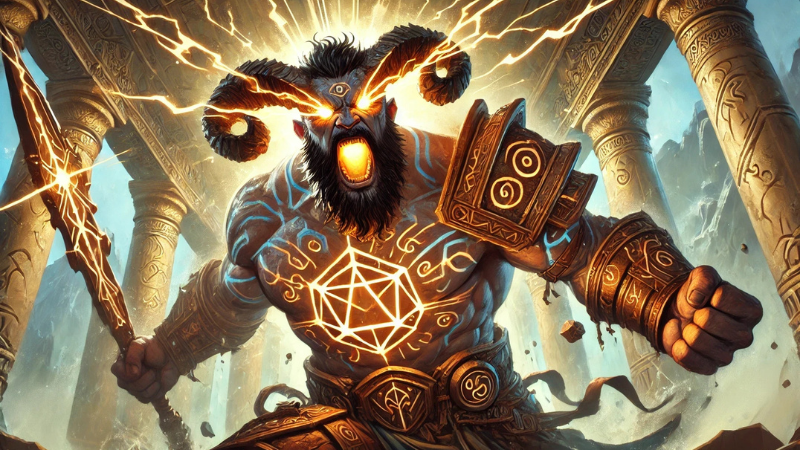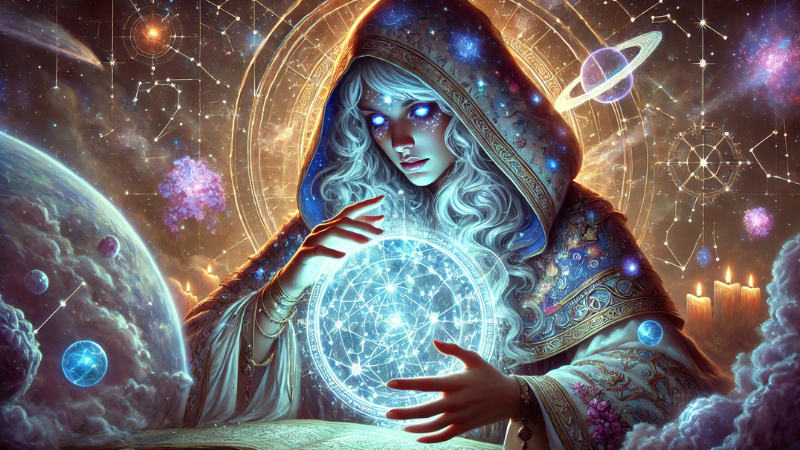

How DnD Stats Work in the New 2024 Rules
As an Amazon Associate I earn from qualifying purchases.
In Dungeons & Dragons the essence of any character comes down to a set of key stats known as Ability Scores. Consisting of Strength, Dexterity, Constitution, Intelligence, Wisdom and Charisma, these scores shape everything from a character’s physical power and ability to take damage to how they detect traps and manage social situations. Understanding how these DnD stats work is essential, not only for playing the game but also for creating characters that feel alive and multifaceted.
With a new 2024 Player’s Handbook now upon us, there have also been a few key changes to the six core stats that are important when it comes to how to make a DnD character and are something both new and experienced players should be aware of. Below, we break down everything you need to know about what ability scores are and how they work using the new DnD 2024 rules.
Table of Contents
- What are DnD Stats in 2024?
- What classes are associated with each stat?
- What are DnD stat modifiers?
- How do you determine stats in DnD?
- How do Backgrounds impact stats?
- How stats impact appearance & personality
- What is Strength in DnD?
- What is Dexterity in DnD?
- What is Constitution in DnD?
- What is Intelligence in DnD?
- What is Wisdom in DnD?
- What is Charisma in DnD?
- Final Thoughts


What are DnD Stats in 2024?
In DnD 5e, each character’s core stats (also known as Ability Scores) represent a range of physical, mental and social attributes. These stats are foundational to how your character interacts with the world and handles challenges. Notably, the six primary Ability Scores have been around since the earliest edition of Dungeons & Dragons and have remained virtually unchanged in all that time. In the DnD 2024 rules they are described as follows:
- Strength (STR): Physical might
- Dexterity (DEX): Agility, reflexes and balance
- Constitution (CON): Health and stamina
- Intelligence (INT): Reasoning and memory
- Wisdom (WIS): Perceptiveness and mental fortitude
- Charisma (CHA): Confidence, poise, and charm
Each ability score can range from 1 to 20, with 10-11 being the average. Stats can, however, can go as high as 30, representing a near superhuman level of ability, although this is extremely rare and usually only occurs in high level characters or particularly dangerous monsters.


What DnD classes are associated with each stat?
In DnD 2024 characters can assign their stats as they see fit. However, there are certain classes that are more reliant on specific ability scores in order to access key features. Below is the list of all 12 of the core DnD classes and their associated stats as per the 2024 rules.
| Class | Primary Ability Score |
|---|---|
| Barbarian | Strength |
| Bard | Charisma |
| Cleric | Wisdom |
| Druid | Wisdom |
| Fighter | Strength or Dexterity |
| Monk | Dexterity and Wisdom |
| Paladin | Strength and Charisma |
| Ranger | Dexterity and Wisdom |
| Rogue | Dexterity |
| Sorcerer | Charisma |
| Warlock | Charisma |
| Wizard | Intelligence |


What are DnD stat modifiers?
Each Ability Score in DnD 5e has an associated modifier which either adds of subtracts from rolls and impacts everything from attack rolls and saving throws to skill checks. For example, a character with a below average Strength score of 7 would suffer a -2 penalty when rolling certain Strength-based checks. Conversely, a character with an 18 in Strength would receive a +4 bonus when conducting Strength-based checks.
Below is the table showing all of the ability score stat modifiers for the DnD 2024 rules.
| Ability Score | Stat Modifier |
|---|---|
| 1 | −5 |
| 2–3 | −4 |
| 4–5 | −3 |
| 6–7 | −2 |
| 8–9 | −1 |
| 10–11 | +0 |
| 12–13 | +1 |
| 14–15 | +2 |
| 16–17 | +3 |
| 18–19 | +4 |
| 20–21 | +5 |
| 22–23 | +6 |
| 24–25 | +7 |
| 26–27 | +8 |
| 28–29 | +9 |
| 30 | +10 |


How do you determine stats in DnD 2024?
In the DnD 2024 rules, Wizards of the Coast recommends three ways to determine your Ability Scores (although ideally you should clarify this with your Dungeon Master):
- Random Generation: Roll four d6s and record the total of the highest three dice. Do this five more times, so you have six numbers which you then apply to your stats.
- Standard Array: Take the following six numbers and assign each one to a specific ability score: 15, 14, 13, 12, 10, 8. Notably, these numbers represent a well rounded character with a mix of average, below average and above average stats.
- Point Buy: Use a pool of 27 points to spend on your ability scores. The cost of each score is shown on the Ability Score Point Costs table. For example, a score of 15 would cost 9 of your 27 points.
| Ability Score | Point Buy Cost |
|---|---|
| 8 | 0 |
| 9 | 1 |
| 10 | 2 |
| 11 | 3 |
| 12 | 4 |
| 13 | 5 |
| 14 | 7 |
| 15 | 9 |


How do DnD Backgrounds impact stats?
In the 2014 version of DnD 5e, a character’s Ability Scores were impacted by the core species they chose. For example, if you chose to play a Dwarf you would receive a +2 to your Constitution stat.
In the DnD 2024 rules, however, this is no longer the case. Instead, ability scores are now modified by the new DnD Backgrounds, which determine where your character came from and the pivotal role that shaped who they are. For example, before starting a life of adventuring your character might have been a Farmer, a Criminal, a Wizard’s Apprentice or a variety of other roles.
Each Background has a list of three ability scores to choose from. You can increase one score by 2 points and another by 1, or you can increase all three by 1. The Wayfarer background for example, offers you the ability to increase your Dexterity, Wisdom or Charisma scores. Below are the various ability scores and their associated Backgrounds.
| Ability | Backgrounds |
|---|---|
| Strength | Artisan, Entertainer, Farmer, Guard, Noble, Sailor, Soldier |
| Dexterity | Artisan, Charlatan, Criminal, Entertainer, Guide, Sailor, Scribe, Soldier, Wayfarer |
| Constitution | Charlatan, Criminal, Farmer, Guide, Hermit, Merchant, Sage, Soldier |
| Intelligence | Acolyte, Artisan, Criminal, Guard, Merchant, Noble, Sage, Scribe |
| Wisdom | Acolyte, Farmer, Guard, Guide, Hermit, Sage, Sailor, Scribe, Wayfarer |
| Charisma | Acolyte, Charlatan, Entertainer, Hermit, Merchant, Noble, Wayfarer |


How do stats impact a character’s appearance & personality?
Your character’s stats are more than just numbers. In fact, they form the essence of who you are. In the DnD 2024 rules Wizards of the Coast has also provided new recommendations for how your stats can impact the way your character looks and behaves. The following table offers a number of different options for high or low stats. Alternatively, you can roll a 1d4 and take a random result to help flesh out your character.
| 1d4 | High Strength | Low Strength |
|---|---|---|
| 1 | Muscular | Weak |
| 2 | Sinewy | Slight |
| 3 | Protective | Self-conscious |
| 4 | Direct | Indirect |
| 1d4 | High Dexterity | Low Dexterity |
|---|---|---|
| 1 | Lithe | Jittery |
| 2 | Dynamic | Clumsy |
| 3 | Fidgety | Hesitant |
| 4 | Poised | Unsteady |
| 1d4 | High Constitution | Low Constitution |
|---|---|---|
| 1 | Energetic | Frail |
| 2 | Hale | Squeamish |
| 3 | Hearty | Lethargic |
| 4 | Stable | Fragile |


| 1d4 | High Intelligence | Low Intelligence |
|---|---|---|
| 1 | Decisive | Artless |
| 2 | Logical | Illogical |
| 3 | Informative | Uninformed |
| 4 | Curious | Frivolous |
| 1d4 | High Wisdom | Low Wisdom |
|---|---|---|
| 1 | Serene | Rash |
| 2 | Considerate | Distracted |
| 3 | Attentive | Oblivious |
| 4 | Wary | Naive |
| 1d4 | High Charisma | Low Charisma |
|---|---|---|
| 1 | Charming | Pedantic |
| 2 | Commanding | Humorless |
| 3 | Hilarious | Reserved |
| 4 | Inspiring | Tactless |


What is Strength in DnD?
Strength measures your character’s physical power, athletic ability and raw force. Strength is essential for melee attacks with weapons that don’t require finesse (like greatswords, warhammers, or battleaxes) as the Strength modifier affects how well a character can land these attacks and how much damage they deal. Additionally, Strength influences tasks that require sheer physical effort, like breaking down doors, lifting heavy objects or climbing steep surfaces.
In a typical DnD 5e game, characters with high Strength might lead the charge in physical encounters, clear obstacles for their teammates, or grapple with foes to prevent them from escaping.


Classes that Benefit from Strength
Classes that prioritize close-range combat typically benefit from high Strength. These include:
- Barbarians: Known for their rage and physical prowess, Barbarians often use Strength-based attacks to deal heavy damage.
- Fighters: Especially those with melee combat specializations, Fighters rely on Strength for most weapon attacks.
- Paladins: Combining martial skill with divine magic, Paladins often need high Strength to hold their ground in battle.
Examples of Strength in DnD
- A Barbarian attempts to break down a locked door. The Dungeon Master calls for a Strength roll versus a specific Difficulty Check to see if they can bash their way through.
- During a wrestling match, a Fighter tries to grapple an opponent. The DM asks for an Athletics check (a Strength-based skill) to see if the Fighter can pin the opponent in place.


What is Dexterity in DnD?
Dexterity is the stat that measures agility, reflexes, and balance. It’s vital for characters who rely on finesse over brute force, often favoring speed and precision in combat and movement. Dexterity affects ranged attacks, finesse weapons (like rapiers and daggers) and provides a bonus to Armor Class, making it essential for avoiding attacks.
Dexterity is commonly used in situations requiring quick thinking or physical control, such as dodging an attack, slipping out of bindings or silently moving through enemy territory. Dexterity-based characters often excel at sneaking, picking locks, and performing acrobatics, which is especially useful in stealth missions or when avoiding traps.


DnD Classes that Benefit from Dexterity
Dexterity is especially valuable for:
- Rogues: Known for their stealth and agility, Rogues rely heavily on Dexterity for attacks and skills, especially when using ranged or finesse weapons.
- Rangers: Dexterity enhances their ranged combat skills and stealth, enabling them to move undetected and take precise shots.
- Monks: Monks often blend Dexterity with martial arts to make agile attacks, dodge strikes and avoid danger.
Examples of Dexterity in DnD
- A Rogue with high Dexterity sneaks into a guarded compound. The DM calls for a Stealth ability check to see if the Rogue can slip by unnoticed.
- A Ranger uses a longbow to strike an enemy from a distance. They roll an attack applying their Dexterity modifier to see if they hit.


What is Constitution in DnD?
Constitution represents a character’s stamina and durability. It determines a character’s Hit Points and overall resilience, which are critical for survival. In fact, high Constitution scores can often mean the difference between life and death in prolonged battles or hazardous environments.
Characters with high Constitution are also less likely to be affected by fatigue, poison, or other physical trials. It’s a generally useful stat that a variety of classes may want to tap into to help provide additional durability in battle.


DnD Classes that Benefit from Constitution
Most classes benefit from high Constitution since it directly contributes to their overall Hit Points, but it’s especially crucial for:
- Barbarians: As the tanks of the party, Barbarians are often in the frontlines of combat, and a high Constitution offers more hit points and saving throw bonuses that can help them stay in the fight for longer.
- Fighters: As melee combatants, Fighters also often depend on having a Constitution to be effective in battle.
Examples of Constitution in DnD
- A Barbarian levels up and gains additional Hit Points because of their high Constitution modifier.
- During an adventure in a poisonous swamp, the party encounters toxic gas. The DM calls for a Constitution saving throw to avoid the poison’s effects.


What is Intelligence in DnD?
Intelligence measures a character’s reasoning, memory and knowledge. It’s particularly crucial for characters who rely on magical knowledge or possess skills requiring book smarts and analytical thinking. Intelligence often plays a role in spellcasting, especially for wizards, and contributes to skills like Arcana, History, and Investigation.
In gameplay, Intelligence checks might be used to recall historical lore, deduce magical properties or solve complex puzzles. That being said, having a high intelligence can also create some interesting characters. For example, a Barbarian who blends both brains and brawn.


DnD Classes that Benefit from Intelligence
Intelligence is key for the following classes:
- Wizards: Intelligence is their primary spellcasting ability, determining the power and success of their spells.
- Artificers: Blend magic and invention, Artificeres rely on Intelligence for creating and using magical devices. (NOTE: Artificers are not a core class in the 2024 rules but can be imported using the 2014 rules).
Examples of Intelligence in DnD
- A Wizard uses an Arcana check to identify the magical properties of an enchanted sword.
- During a mystery in a haunted castle, a player with high Intelligence uses an Investigation check to piece together clues left by an ancient lich king.


What is Wisdom in DnD?
Wisdom represents perception, insight and intuition. It’s the ability to understand and interpret the world on an instinctual level, making it important for characters attuned to their surroundings. Wisdom influences skills like Perception and Insight and is the primary stat for spellcasting in certain classes.
In gameplay, Wisdom is frequently used in perception checks to detect traps, enemies or subtle changes in the environment. Characters with high Wisdom often excel in making intuitive decisions, understanding people or seeing through deceit. Wisdom also affects certain saving throws, such as resisting charm or mental manipulation.


DnD Classes that Benefit from Wisdom
Wisdom is particularly important to the following classes:
- Clerics: Wisdom is their primary spellcasting ability and is essential for casting spells and healing.
- Druids: Wisdom powers a druid’s connection to nature, enhancing spells and abilities related to the environment.
- Rangers: Rangers use Wisdom for tracking, animal handling and certain spells.
Examples of Wisdom in DnD
- A Druid with high Wisdom enters a forest, using their Perception skill to detect movement in the trees and avoid a potential ambush.
- A Cleric tries to discern whether a merchant is lying about a magical artifact they are trying to sell to the party.


What is Charisma in DnD?
Charisma represents charm, influence and force of personality. Characters with a high Charisma stat are often natural leaders, persuasive diplomats or intimidating presences. Charisma affects social skills like Persuasion, Intimidation, and Deception, and it’s the primary spellcasting stat for Sorcerers and Warlocks.
In gameplay, Charisma is crucial for social encounters, allowing characters to sway NPCs, lead negotiations or intimidate foes. It’s also a stat that tends to be directly reflected in gameplay and is ideal for characters who are forceful, charming or cunning.


DnD Classes that Benefit from Charisma
Charisma is vital for the following classes.
- Bards: Charisma powers their music-based magic, enabling them to inspire allies and charm enemies.
- Sorcerers: Sorcerers rely on their innate Charisma to cast spells, drawing power from within.
- Warlocks: Charisma fuels a warlock’s magic, granted by their pact with otherworldly entities.
- Paladins: These holy warriors also use Charisma to channel and cast their holy magic.
Examples of Charisma in DnD
- A Bard with high Charisma tries to persuade a guard to allow the party to pass through a restricted area.
- A Sorcerer intimidates a rival by harnessing their Charisma, compelling them to reveal valuable information about an upcoming threat.


Final Thoughts
In DnD, ability scores do more than affect dice rolls; they shape a character’s identity. By understanding how these stats work, you can create richer characters, make strategic gameplay decisions, and fully engage with the game world. So whether you’re slinging spells, sneaking through the shadows, or charging into battle, be sure to embrace your stats along the way.
You can find the complete rules for DnD stats in the 2024 Player’s Handbook which is available which is available now on D&D Beyond and Amazon.
More D&D Rules Coverage
For more from the world of Wizards of the Coast, visit our D&D Rules page.


